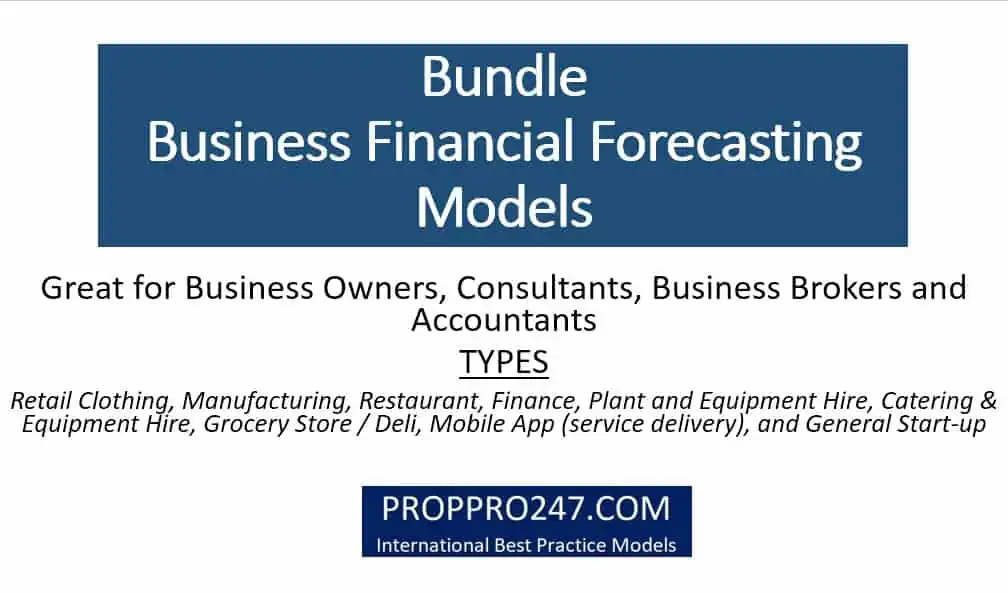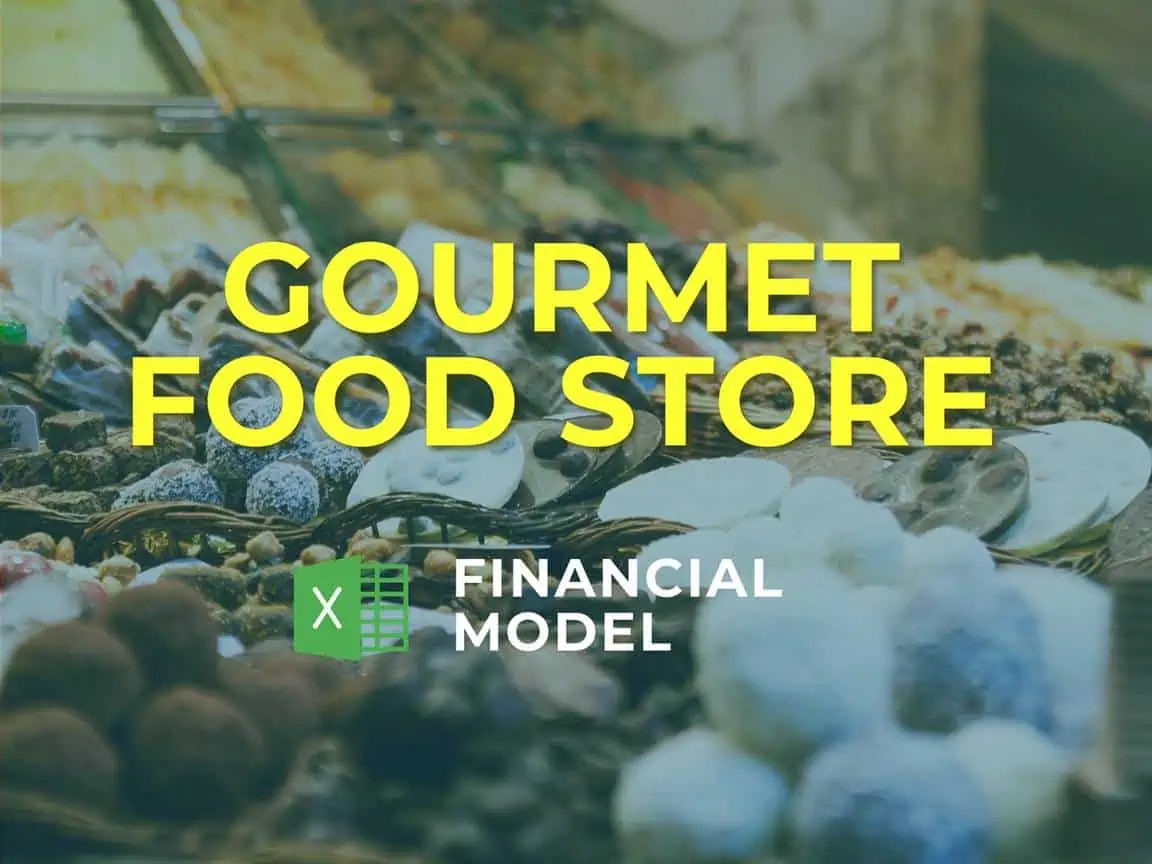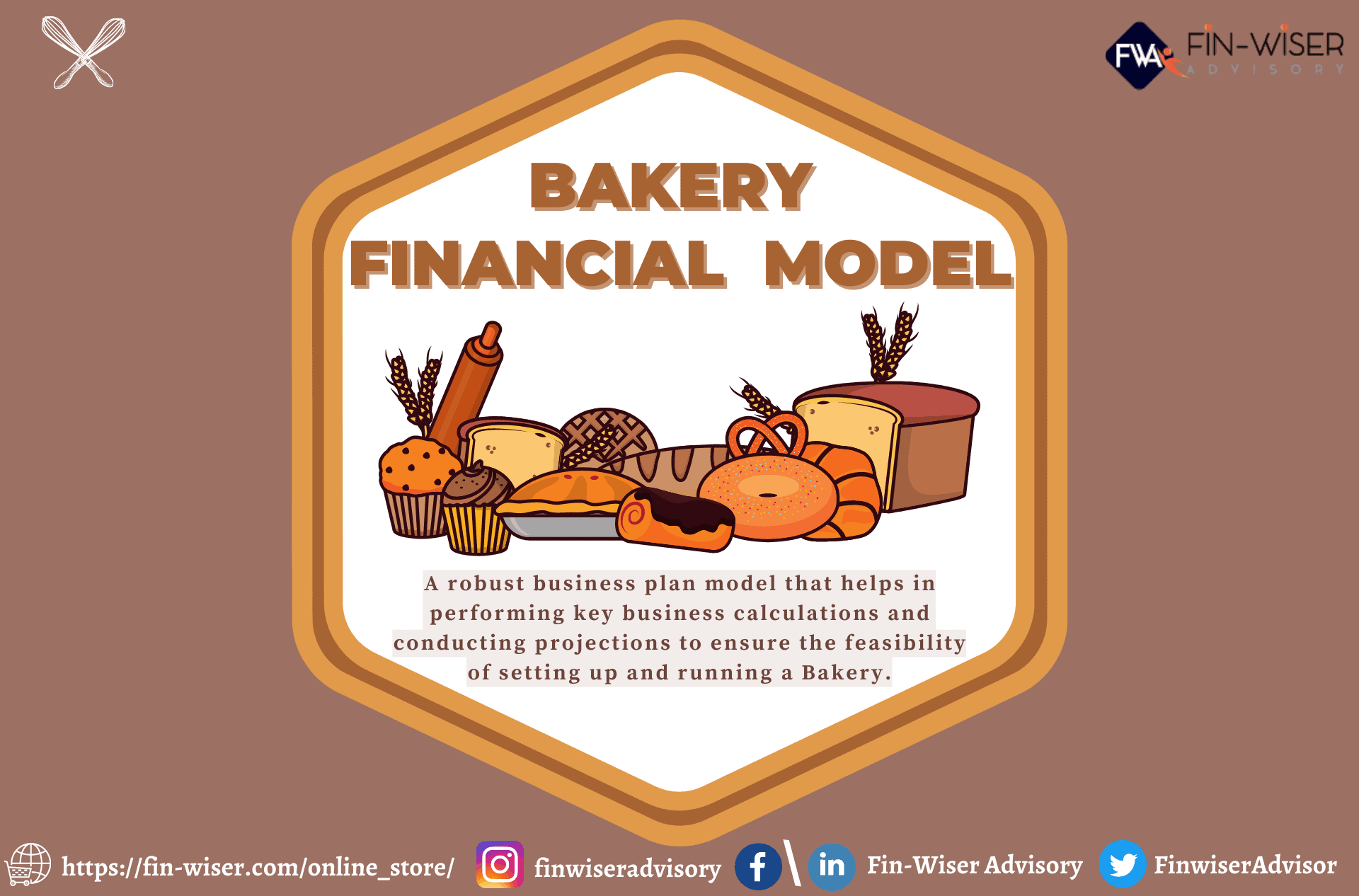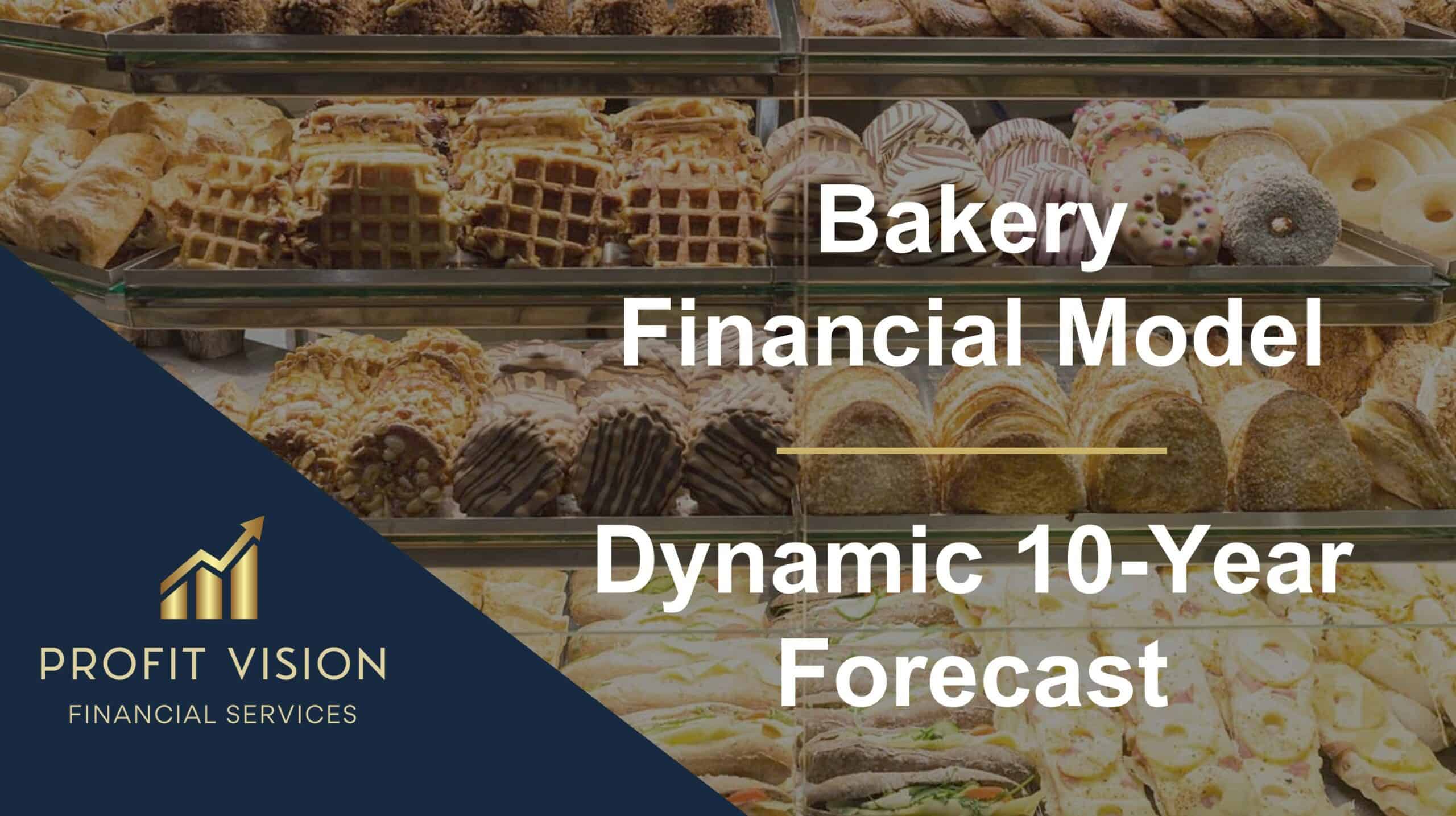Bakery Financial Model
This financial model can be utilized to evaluate a bakery business feasibility.
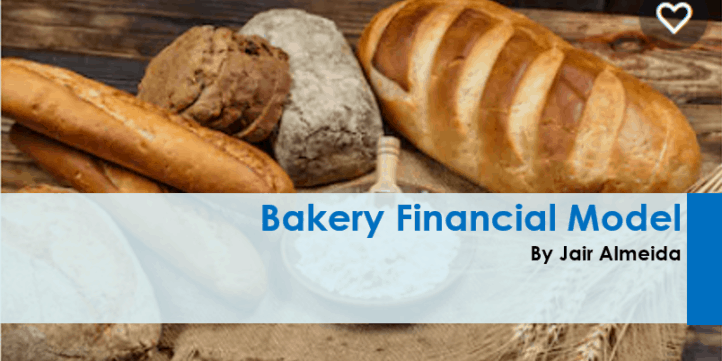
Description:
This financial model can be utilized to evaluate a bakery’s business feasibility. This template is detailed, robust, and very user-friendly. The model additionally allows the user to develop scenarios based on the variation of key metrics, namely units sold, selling prices, and operational cost variation.
After modeling the scenarios, the user can make a comparison of different scenarios side-by-side. The user only needs to input information into the cells formatted in the dark blue font in the Assumptions sheet, and any other formats are formulas or labels.
For demonstration purposes, the template is provided with information from a hypothetical business model for a bakery Business. The data must be erased/adjusted to fit the user’s needs.
Model Structure:
Intermediate Sheets (calculation sheets):
- Revenue and COGS: The revenue is projected in this sheet using an easy-to-follow logic (Units Sold –> Selling Price —> revenue). The cost of revenue is calculated based on the cost margin defined for each line of product.
- Staff: Calculation of Wages & salaries based on the hiring plan set in the assumptions sheets;
- Debt Model: The user can model up to three loans. (the debt’s info is all inputted in the assumptions sheets)
- Assets: In this sheet, based on the inputs set in the assumptions sheets, the investment and depreciation are calculated on a monthly basis;
- Working Capital: Calculation of the working capital requirement by using the collection, payment, and duration of storage period assumptions. Outputs:
- Executive Summary: The resulting financial data are consolidated in the summary sheet, where a brief and easily comprehensible view of the main KPIs and Charts are presented to the user in a ready-to-print format;
- Cases Overview: In this sheet, the user can analyze all the scenarios side-by-side (the user must run the macro to update the scenarios.);
- Yearly Financial Statements: Yearly P&L, Balance sheet, and cash flow (direct and indirect method);
- Monthly Financial Statements: Monthly P&L, Balance sheet, and cash flow (direct and indirect method).
Important Note: This model template uses Macro with a filetype .xlsm
Similar Products
Other customers were also interested in...
Bundle – Business Financial Forecasting Mode...
The purpose of this Bundle of Business Forecasting and Financial Models is to assist Business Owners... Read more
Gourmet Food Store Financial Model Excel Template
Gourmet Food Store Financial Model Allows you to start planning with no fuss and maximum of help . S... Read more
BAKERY – 3 Statement Financial Model with 5 ...
This Bakery Business Plan Model is a perfect tool for a financial feasibility study on launching a B... Read more
Coffee Shop Financial Model Excel Template
Download Coffee Shop Financial Model Template. Allows you to start planning with no fuss and maximum... Read more
Pizzeria Financial Model Excel Template
Get Your Pizzeria Budget Template. Excel template - robust and powerful. This is your solid foundati... Read more
Food Truck Financial Model Excel Template
Purchase Food Truck Financial Projection Template. Excel Template for your pitch deck to convince In... Read more
Bakery Financial Model – Dynamic 10 Year For...
Financial Model providing a dynamic up to 10-year financial forecast for a startup or existing Baker... Read more
Start Up Food Truck Business Financial Model
Start Up Food Truck Business Financial Model presents the case of an investment in a food truck busi... Read more
Coffee Truck Financial Model Excel Template
Get the Best Coffee Truck Financial Projection Template. Creates a financial summary formatted for y... Read more
Confectionery Shop Financial Model Excel Template
Confectionery Shop Financial Plan Allows investors and business owners to make a complete financial ... Read more
You must log in to submit a review.



















